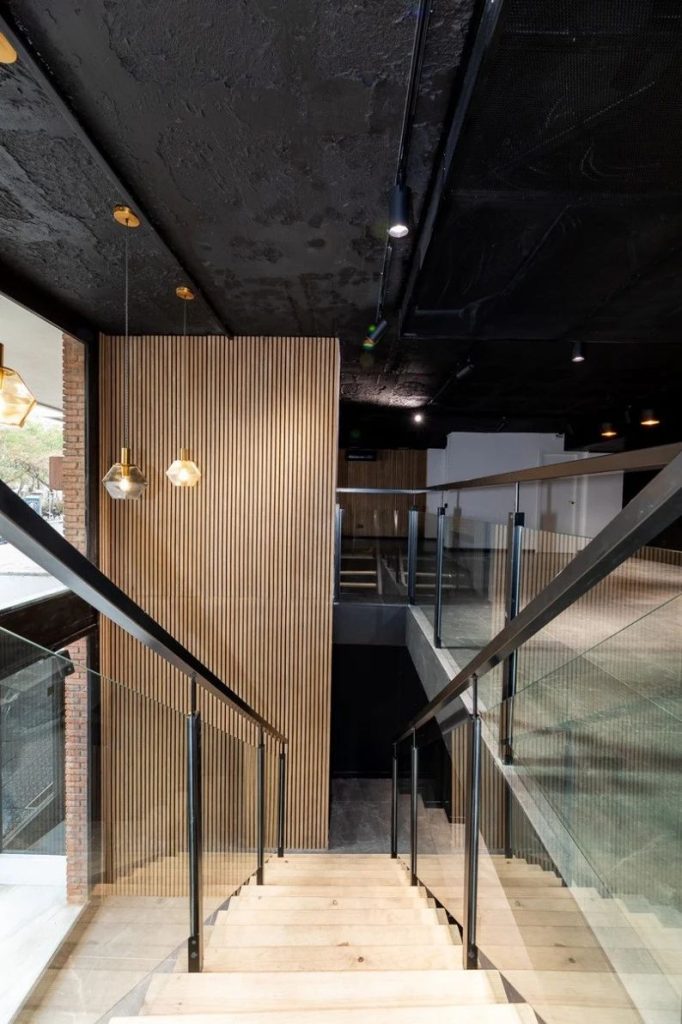When it comes to enhancing your living space, few elements offer as much impact as slat walls. Not only do they bring an aesthetic upgrade, but they also play a pivotal role in noise reduction. This article dives deep into the benefits of using slat walls for noise reduction, how they work, and why they are a popular choice for homeowners and professionals alike.
What Are Slat Walls?
Slat walls are composed of vertical or horizontal slats, often made of wood or composite materials, designed to cover and elevate the appearance of interior walls. Their sleek, modern design adds texture and depth to spaces, making them both functional and visually appealing. But beyond their looks, slat walls are highly effective for acoustic management, making them a favorite in spaces that demand reduced noise levels.
Key Features of Slat Walls:
- Material Composition: Often made from wood, MDF (medium-density fiberboard), or engineered panels.
- Design: Available in various finishes and colors to suit different interior styles.
- Application: Common in living rooms, offices, music studios, and commercial spaces.
How Slat Walls Reduce Noise
1. Sound Absorption
One of the primary ways slat walls contribute to noise reduction is through sound absorption. The material used in these panels, particularly when combined with acoustic felt backing, absorbs sound waves rather than reflecting them. This minimizes echoes and reduces overall noise levels.
How It Works:
- The slat walls’ structure breaks up sound waves.
- Materials like wood have natural acoustic properties that dampen sound.
- Felt backings behind the slats enhance sound absorption, trapping sound vibrations and preventing them from bouncing around the room.
2. Noise Insulation
Slat walls also offer noise insulation benefits. The strategic placement of slats, combined with dense backing materials, can block external noises, creating a quieter indoor environment. This makes slat walls perfect for rooms where maintaining a peaceful atmosphere is essential, such as home offices or nurseries.
Why This Matters:
- Privacy: Less sound transmission between rooms.
- Productivity: Reduces distractions in workspaces.
- Comfort: Creates a serene environment at home.
Benefits of Using Slat Walls for Noise Reduction
Enhanced Acoustics for Various Spaces
- Home Theaters: Slat walls improve sound quality by absorbing excessive sound waves, making movie nights more enjoyable.
- Studios and Offices: Better soundproofing allows for clearer audio recordings and uninterrupted meetings.
- Living Areas: Reduces ambient noise, making conversations clearer and more comfortable.
Improved Interior Aesthetics
Unlike traditional soundproofing materials, slat walls do not compromise on style. Their modern look fits well with various interior design themes, from contemporary to rustic.
Easy Installation and Versatility
Installing slat walls is straightforward, making them a favorite for DIY enthusiasts. They can be adapted to any room size and come in modular panels for seamless customization.
Noise Reduction with Slat Walls
| Feature | Description |
|---|---|
| Sound Absorption | Reduces echoes and minimizes room noise |
| Noise Insulation | Blocks external sounds for a quieter space |
| Aesthetic Appeal | Enhances room design while providing function |
| Easy Installation | DIY-friendly with modular, customizable panels |
Step-by-Step Guide: How to Install Slat Walls for Noise Reduction
- Choose Your Location: Identify the space where you need soundproofing and aesthetics.
- Select the Material: Opt for wooden or composite slat panels with acoustic backing.
- Prepare the Wall: Ensure the surface is clean and free of debris.
- Measure and Cut: Cut the panels to fit the wall dimensions accurately.
- Apply Adhesive or Mounting Hardware: Attach the panels securely, ensuring they align seamlessly.
- Finishing Touches: Make any necessary adjustments and inspect the installation for gaps.
FAQs About Slat Walls for Noise Reduction
1. Can slat walls be used in outdoor settings?
While slat walls are primarily designed for indoor use, there are weather-resistant options available that can be installed in outdoor spaces, such as patios.
2. Are slat walls effective for soundproofing entire rooms?
Slat walls significantly reduce noise, but complete soundproofing may require additional measures like specialized insulation or double-layered drywall.
3. What types of rooms benefit most from slat walls?
Spaces like home offices, music studios, living rooms, and home theaters benefit the most from the noise-reducing properties of slat walls.
4. Do slat walls require professional installation?
No, slat walls are DIY-friendly. However, for larger or more complex installations, professional help can ensure a perfect fit.
5. Are there eco-friendly options available?
Yes, many manufacturers offer slat walls made from recycled or sustainably sourced wood, making them a green choice for environmentally conscious homeowners.








